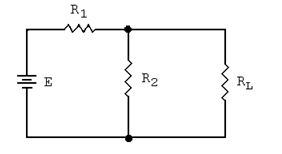Solve the system of linear equations.
?

?
A. ?
B. ?
C. ?
D. ?
E. ?
Answer: D
Mathematics
You might also like to view...
R1 = 2.2 Kê, R2 = 3.3 Kê, RL = 1.2 Kê, and E = 20 V. Find GN.

a. 366 æS
b. 454 æS
c. 757 æS
d. 576 æS
e. 392 æS
Mathematics
Solve.The planets in a certain solar system have a path that is an ellipse, with Star A as one of the foci. Planet X has a perihelion of 588.6 million miles and an aphelion of 631.8 miles. Find an equation for Planet X's orbit. Express your answer with a and b in millions of miles, rounded to the nearest tenth of a million.
A.  +
+  = 1
= 1
B.  +
+  = 1
= 1
C.  +
+  = 1
= 1
D.  +
+  = 1
= 1
Mathematics
Expand, where i2 = -1.(1 + 3i)3
A. 28 + 36i B. 36 + 28i C. -18 - 26i D. -26 - 18i
Mathematics
Use the graph to find the vertical asymptotes, if any, of the function.
A. none B. y = 0 C. x = 0, y = 0 D. x = 0
Mathematics




